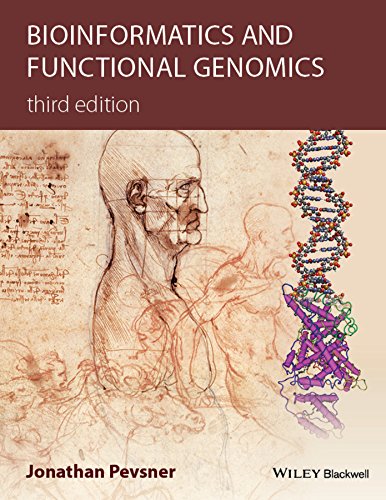BiologyDept. |
BIO
325A
|
|
BiologyDept. |
BIO
325A
|
|
Required Texts: Strongly Recommended: (2) Phylogenetic Trees Made Easy,
5th edition by Barry Hall ($31.00 at Amazon Books) most helpful for
the MEGA X suite of programs; also introduces basic concepts and
practices in computer programming, databases, and network theory (6) if you have a Python background or interenst in learning it: *R.W. Hamming's famous maxim: The purpose of computing is insight, not numbers |


Biological Databases from Wikipedia (2019 update)
What is BIO 325, Bioinformatics? Think of it as the computational analysis - by way of specific algorithms (often embedded in more general scripts and programs with user-friendly GUIs) - of molecular sequence data to test hypotheses about modeled biological processes for understanding molecular structures, genomes and functions in order to make Discoveries. "The great challenge in biological research today is how
to turn data into knowledge. Syndney Brenner: The Scientist 16(6): 12, March 18, 2002 "Where is the Life we have lost in living? "How often have I said to you that when you have eliminated the |
What is "Genomics"? |
What is "Bioinformatics"? |
Our Main Theme: Computational Analysis of Sequence, Structure,
Function to make Discoveries! Our Main Goals: (1) to understand Biological systems and processes, to discover new knowledge about Biological systems through computational analyses of molecular sequences and whole genomes, to decipher Genotype to Phenotype relationships & Emergent Properties, and (2) to understand the theoretical basis of the algorithms used in the programs for computational analyses. |
| The lecture portion of the course serves two purposes (and click here for Projects
and Presentations):
(1) to introduce you to the basic, core concepts of Bioinformatics, which underlie the many, many applications used by computational biologists to extract knowledge and understanding from myriads of databases. How is sequence information collected, stored and organized, managed and distributed? MOST IMPORTANTLY, how can we use sequence information to understand complex biological processes? Which bioinformatic methods best reveal and conceptualize the raw information provided by genomics and proteomics research? (See Course Outline in FlowChart format). (2) to provide you with a solid theoretical basis for not only methodology but also more importantly for hypothesis construction and testing by proper experimental design (i.e., the scientific method used in genomics and bioinformatics) Together we will try to get at least a glimpse of the subtle variations in relatively simple biological structures, and how these variations combine in numerous ways to contribute to a wonderful and exciting biological complexity and hence diversity. As always with all my courses, the pedagogy rests on two main themes: (1) Knowing, understanding, and analyzing major concepts, and how these concepts relate to each other, to the major concepts of all biology, and to disciplines and ideas outside the normal realm of biological science; (2) Understanding the theory and practice of the scientific method, and then how it transforms questions, observations, problems, etc., into concept and ultimately theory by way of well designed experiments coupled with informed interpretation of the experimental data. Every attempt will be made to integrate major concepts to show the unity of the various sub-disciplines comprising molecular biology by applying the knowledge and techniques of genomics and bioinformatics. Every attempt will be made to collect a seemingly overwhelming amount of details into regular, concept-based patterns forming the over-arching themes and principles of modern biology. Yes, these patterns and themes exist! Reductionism will lead to Holism, especially by way of Bioinformatics, and to an increased awareness of how sets of regularly repeating themes and patterns, first observed in macromolecular sequences, combine in myriad ways to generate the wonderful, rich diversity of living organisms. Then you will embark on a new and exciting adventure into Systems Biology... A note about your texts for this course: a constant, repeating theme throughout the texts, in each chapter, almost like a fractal image, (and this site too, and this one) is the fundamental relationship of structural genomics to functional genomics to comparative genomics, which is interlaced always with computational analyses. |
{CURRENT READING ASSIGNMENTS and PROBLEMS or CRAaP}
Please Note: each of the following sections is divided into Reading Assignments and Web-links; the reading assignments can be found by clicking the listed links, while the Web-links and other useful information are located on the Resources for BIO 325 page Review of the Basics: Nucleic Acid & Protein SEQUENCES Part I: Sequence Databases and Information Retrieval II. Pairwise Sequence Comparisons III. BLAST, FASTA and Advanced BLAST IV. Protein Sequence and Structure Analyses V. MSA's or Multiple Sequence Alignments |
Grade categories, distributions, scaling,: |
(A) Databases:
Nucleic Acids Research Journal with access to all 2020 |
(B) Model Organisms:
MGI 2.7 - Mouse Genome Informatics |
(C) Genome Comparisons:
|
(D) MSA's: |
(E) Phylogenetics: MEGA - Molecular Evolutionary Genetics Analysis |
Links Collections for Specific Tasks in Genomics & Bioinformatics: |